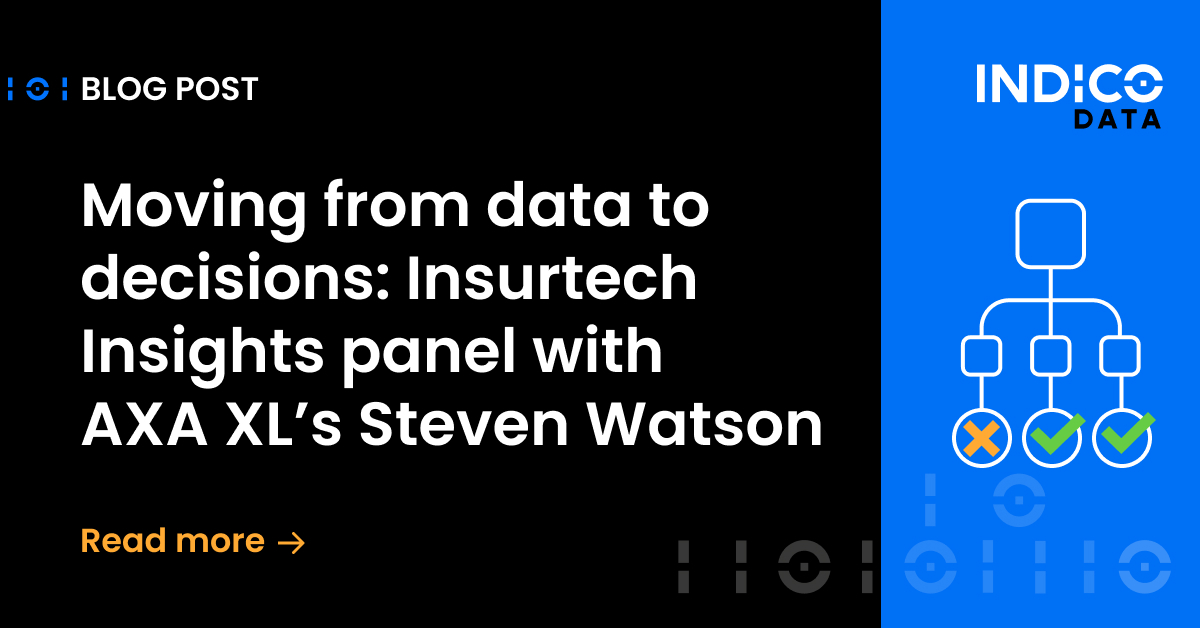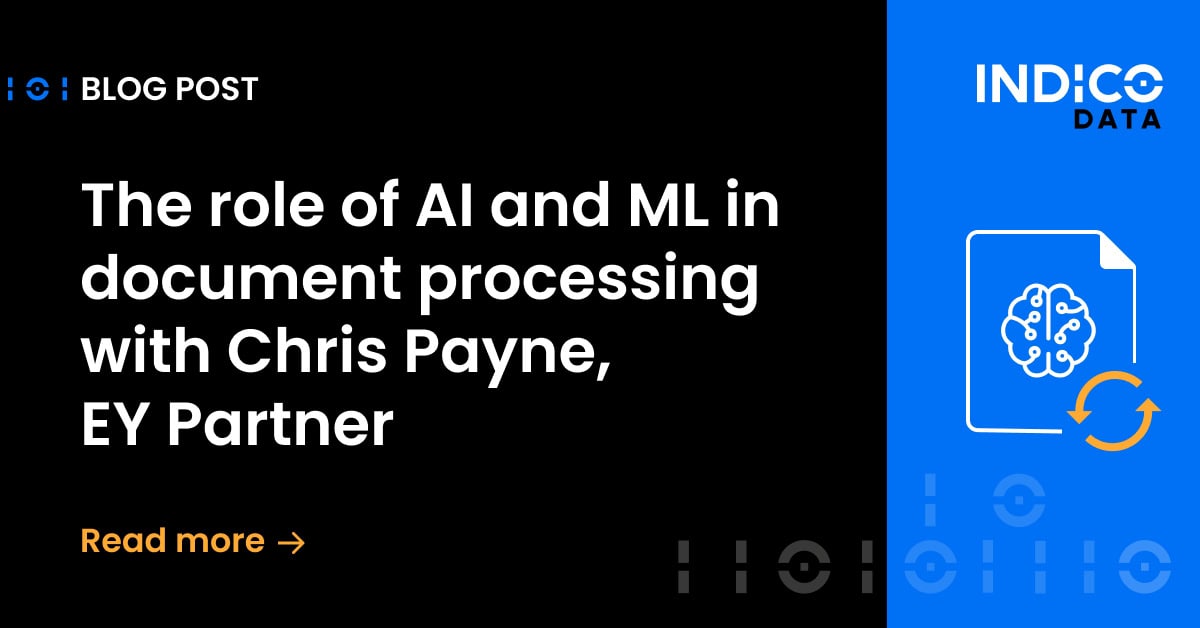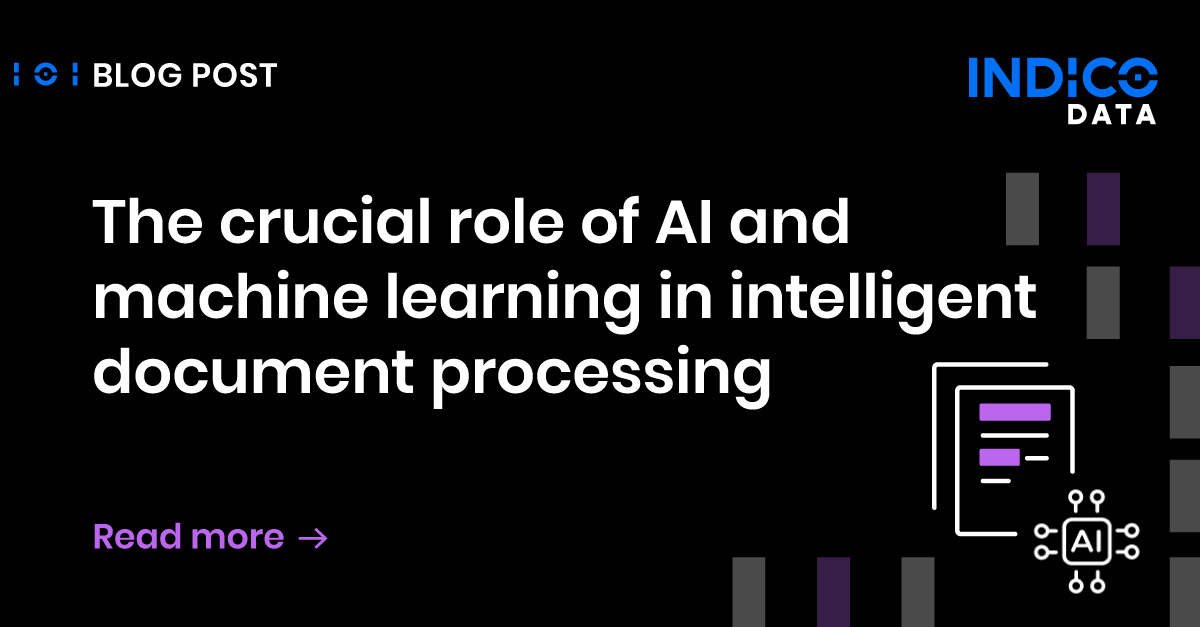In their never-ending quest to automate claims processing, insurance companies are naturally turning to artificial intelligence (AI) technology. And plenty of vendors are more than willing to assure you AI will bring you to the promised land of straight-through processing (STP).
Indico Data is not one of them.
There’s no question AI can and does help automate insurance claims triage as well as processes including claims document intake. But buying into idea that AI can automate claims processing end-to-end with no human intervention is folly, perhaps even dangerous, because it invites mistakes.
AI engines as they exist today, and for the foreseeable future, simply cannot deal with all the possible permutations in all but the simplest claims. They need a human assist, or a human-in-the-loop as it’s known.
In this post, we’ll clarify what is reasonable to expect in terms of claims automation, and some of the steps where insurers will need human help.
Automating claims data extraction
The first step in most claims is receipt of first notice of loss (FNOL) documents. That could mean a claim form, one or more photos, repair estimates, and the like. This is an area where AI can really shine.
Using a form of intelligent document processing known as intelligent intake, insurers can create AI-based models that read FNOL documents. Such automation models can be trained on what to look for – names, addresses, policy numbers, damage estimates, and such. The key is use of AI-based large language models (LLMs), including Generative Pretrained Transformer (GPT) models, the same family that gave us ChatGPT.
Even when such documents are in an unstructured format, as they nearly always are, a good intelligent intake platform can nonetheless find those important data points. The platform will then extract the data and convert it into a structured, machine-readable format.
Out of the gate, intelligent intake for insurance claims can be quite effective, easily dealing with, say, 75% of all incoming documents. But they will on occasion be unable to find certain data or make a mistake.
A platform that incorporates human-in-the-loop capabilities will enable one of your associates to correct the error and tell the model the decision it should have made. Similarly, when the model isn’t sure whether it made the right decision or not, a human can validate. Either way, the end result is incorporated into the model, such that it gets it right next time a similar situation arises. So, over time, the claims automation model becomes more effective.
Related content: 3 ways automated claims processing helps detect insurance fraud
Claims data entry
Once relevant claims data is in a structured format, it can now be entered into your chosen claims processing system, such as Guidewire ClaimCenter. This can be accomplished using the intelligent intake platform itself, if it has that capability, or by using a robotic process automation (RPA) solution.
RPA by itself, it should be noted, can effectively process only structured content, which is why the extraction and conversion step outlined above is so important. (RPA vendors may tell a different story; feel free to press them on it.)
Related content: How automating claims intake streamlines settlements, saves time, and boosts customer satisfaction
Automate insurance claims triage
With claims data in a structured format, insurers can also apply a series of rules and algorithms to help automate the claims triage process. Claims can be classified based on type, location, potential dollar amount, and more.
Once classified, claims can then be automatically routed to the appropriate department or adjuster. Here again, this process is unlikely to be perfect; it’s difficult to create rules that account for every possible permutation. But if you can automate claims triage for even 50% or 75% of all claims, that’s a significant step forward.
Related content: How to eliminate manual processes in insurance claims and underwriting
Third-party insurance data integration
Insurers are increasingly looking to incorporate third-party data into the claims process. That includes weather data related to property claims, including catastrophic incidents, as well as medical databases for health insurance and workers’ compensation claims.
Here again, once that initial intake data is in a structured format, it becomes much easier to read it and determine which third party data may be relevant.
Automate claims fraud detection
AI is also a natural for helping insurers detect fraud. Machine learning models are able to parse through enormous amounts of data in short order, looking for patterns or specific incidents that indicate suspicious activity. Such data could include your own historical claims data as well as that from third-party providers.
This is another area, however, that should involve human oversight. While the AI tools are great at finding potentially suspicious activity, it’s best to have humans decide whether to pursue a fraud inquiry. There are too many nuances involved to leave the matter to an AI engine.
Claims communication automation
Finally, AI can be a viable solution for helping insurers communicate with customers about their claims. Ensuring such communications happen in a timely manner is crucial to customer satisfaction.
Examples include AI-driven chatbots through which claimants can get answers to simple questions about the status of their claims, such as ensuring various documents were received. AI can also be used to automate requests for additional information, via either web-based chatbots or email.
It may seem odd for an AI vendor to say, but AI is not going to replace all of your claims associates anytime soon. It can, however, make them far more accurate and effective, give them more time to focus on truly complex issues, and generally help you process claims faster to keep clients happy.
To learn more about intelligent intake for insurance claims, sign up for a free demo or contact us with any questions.


